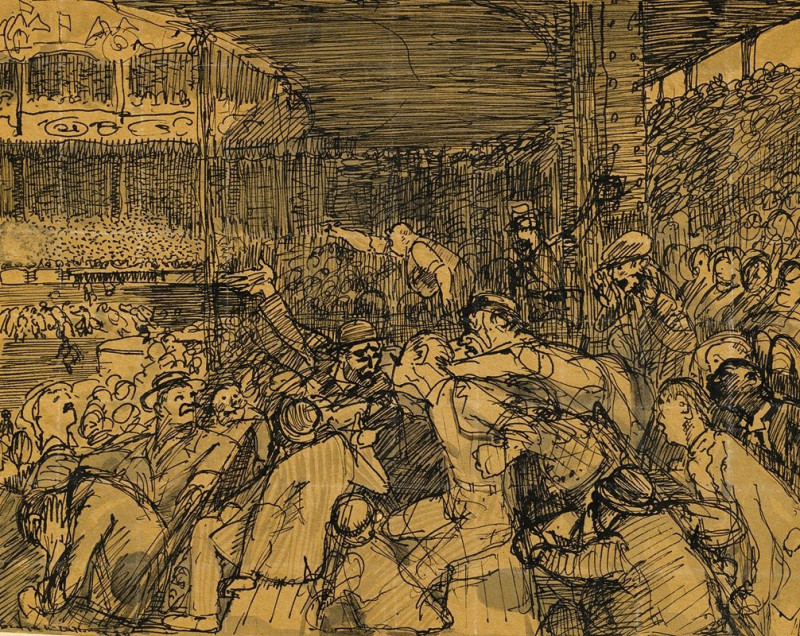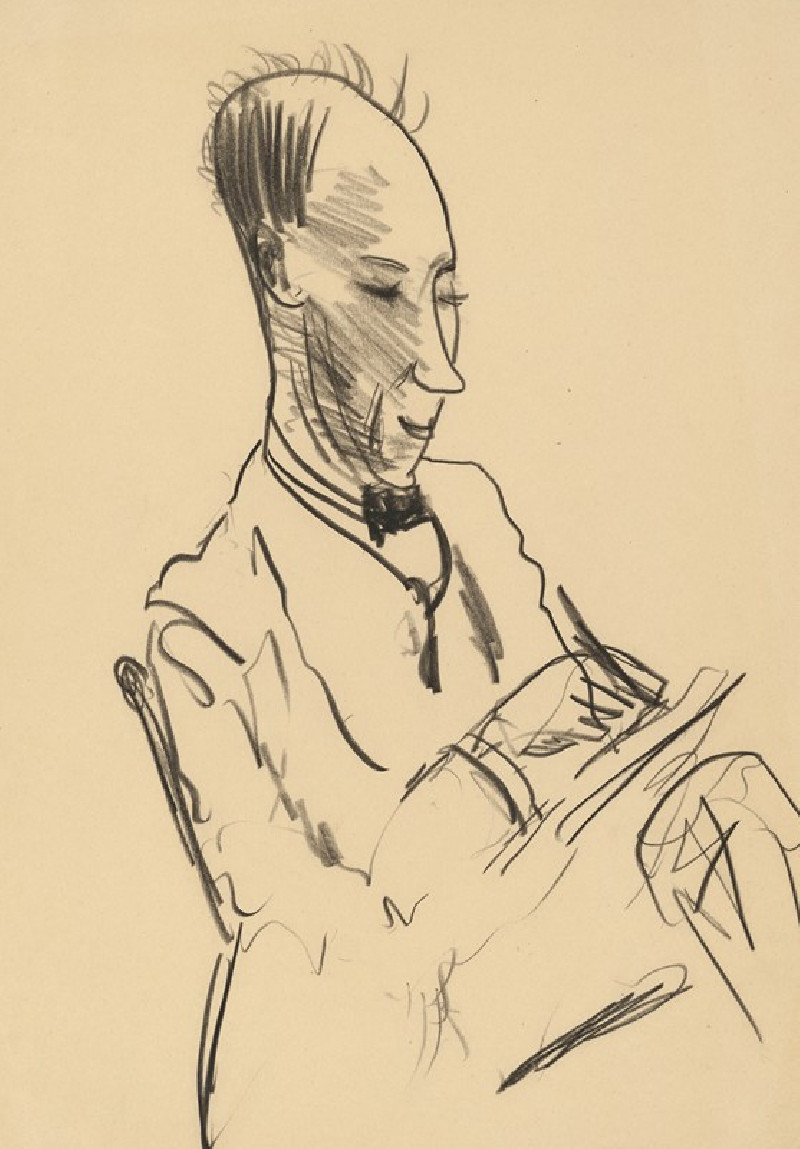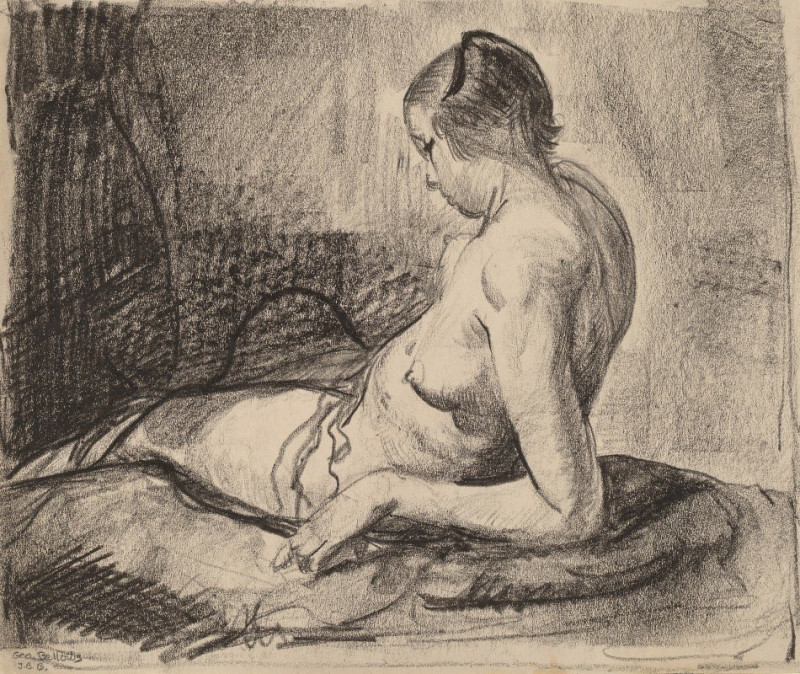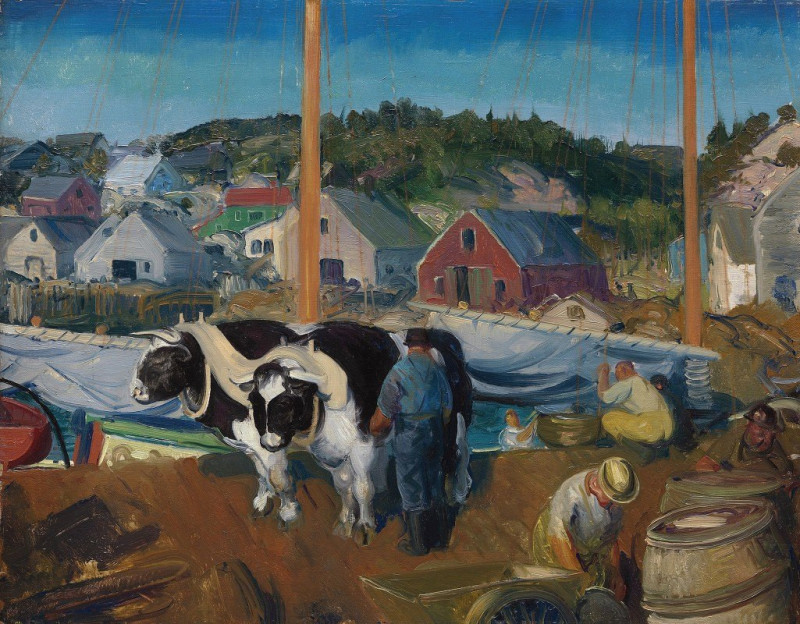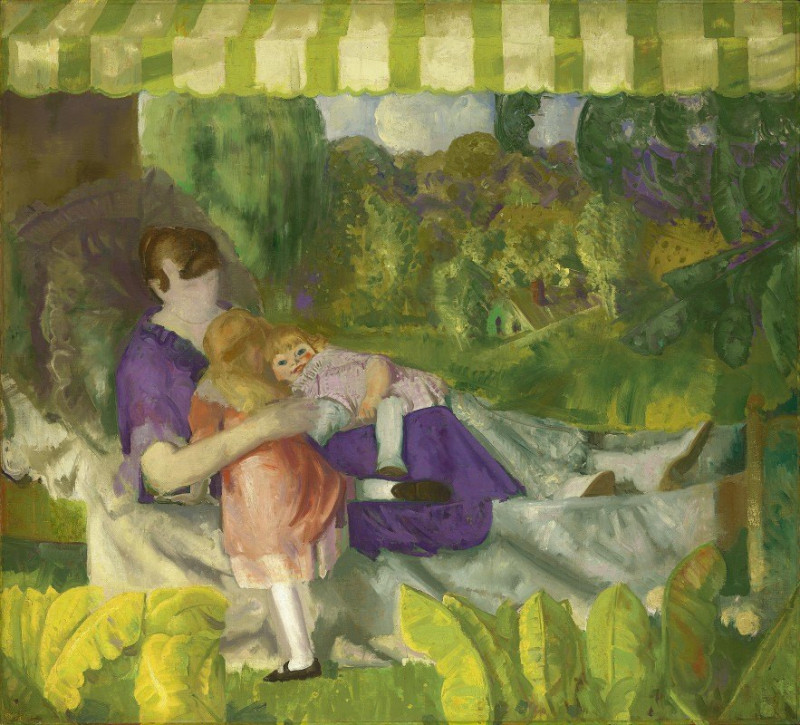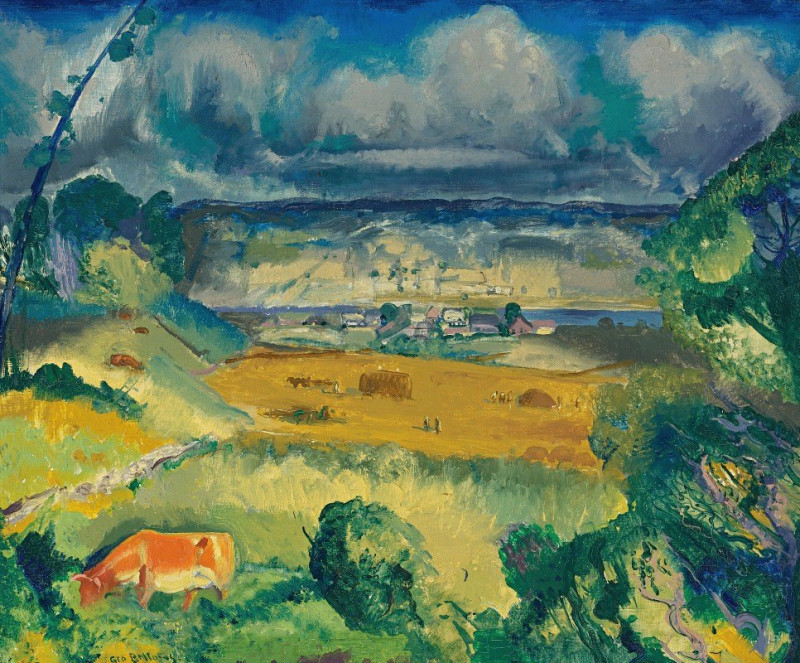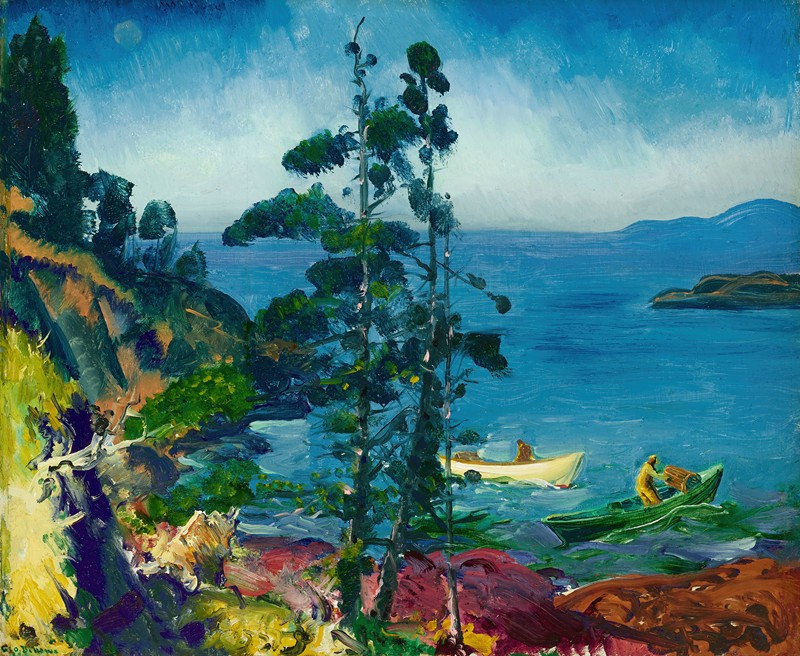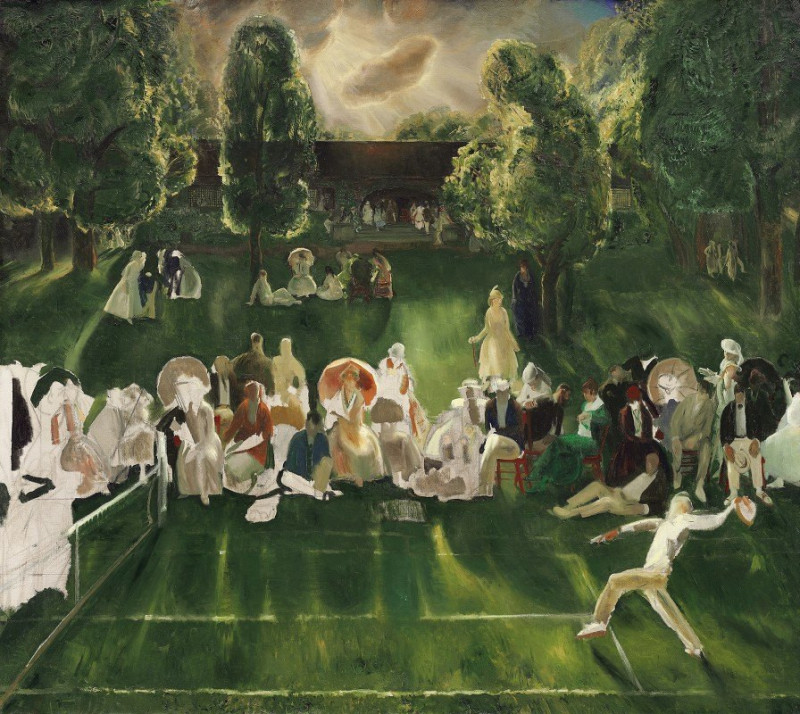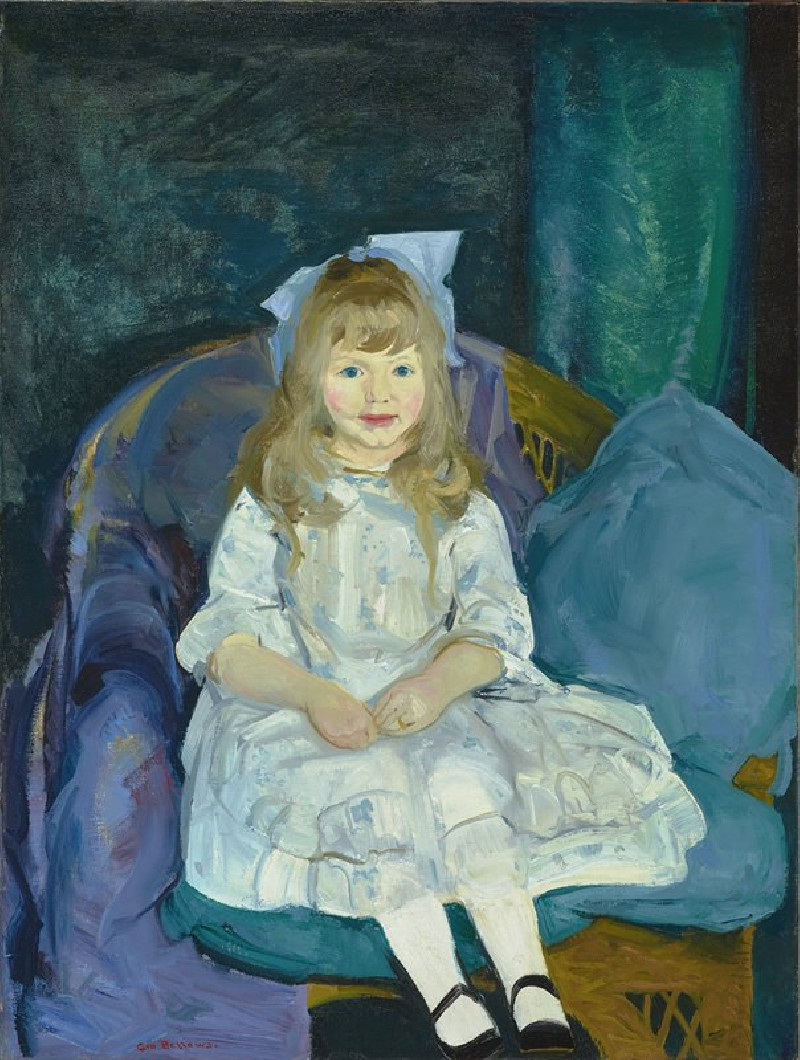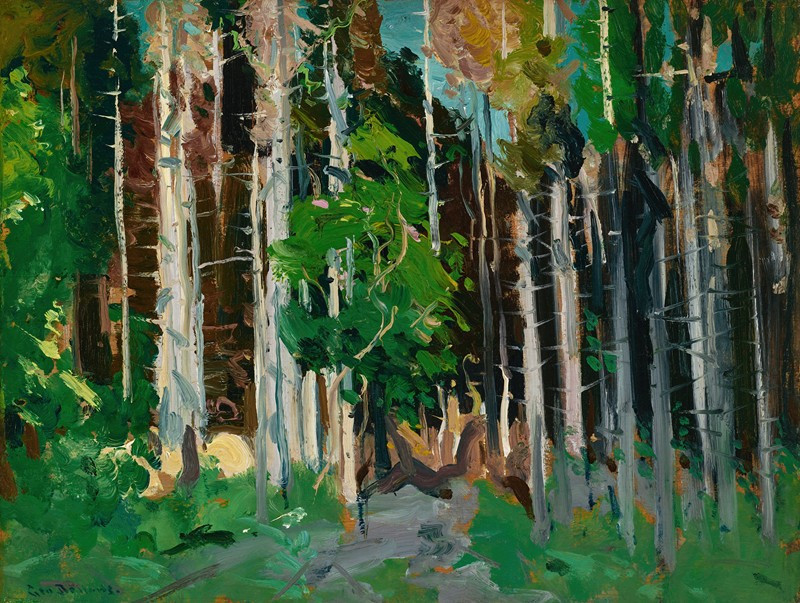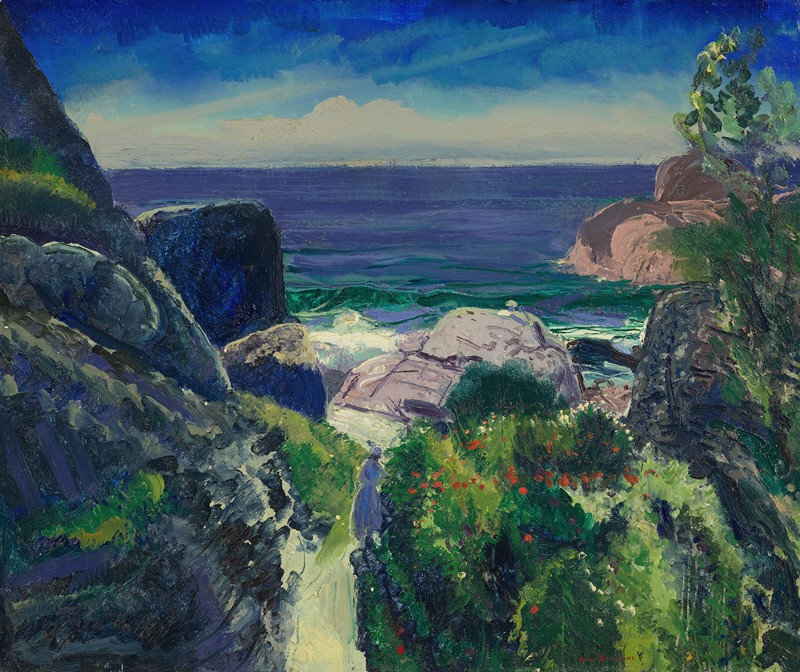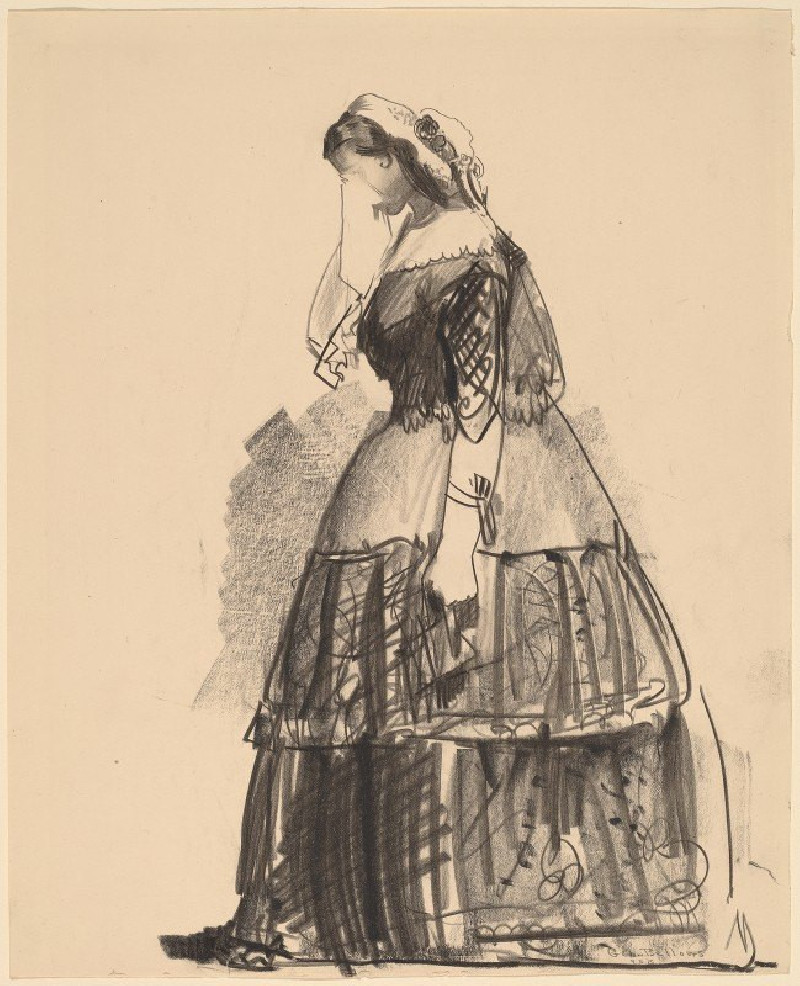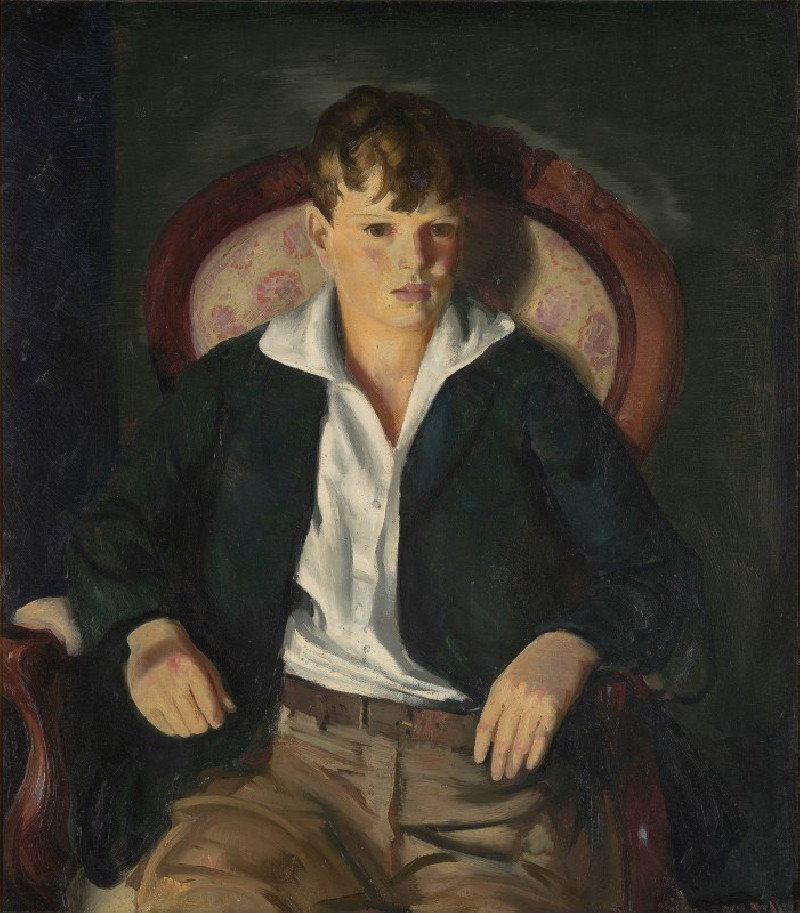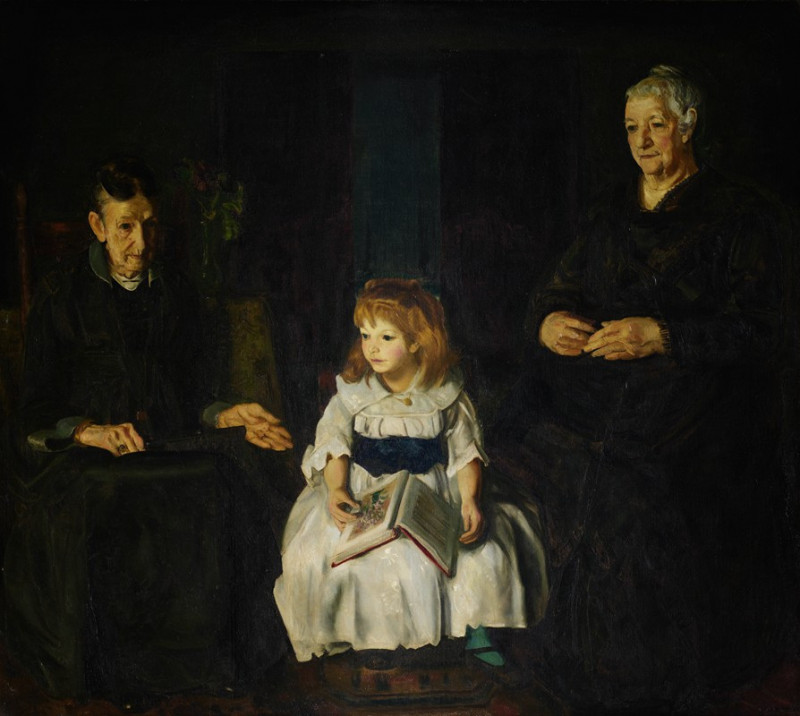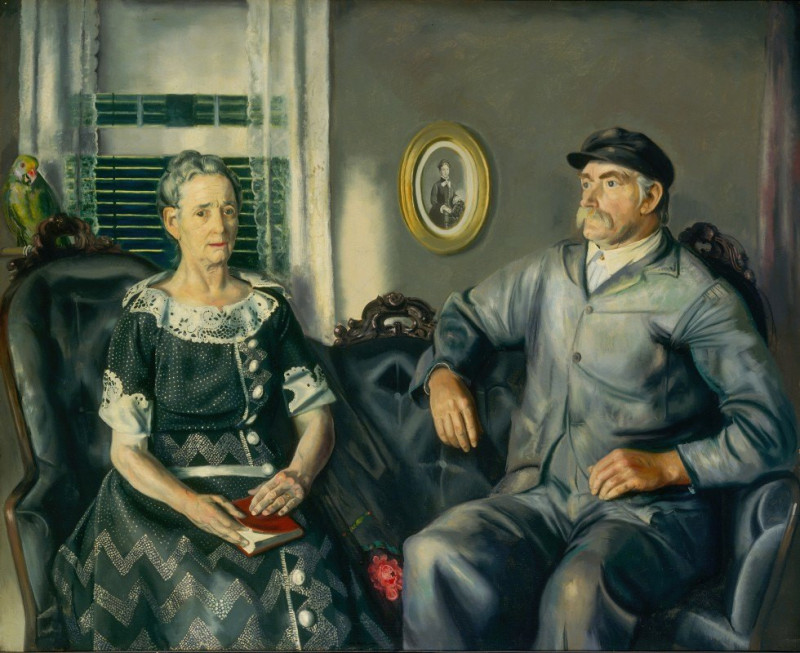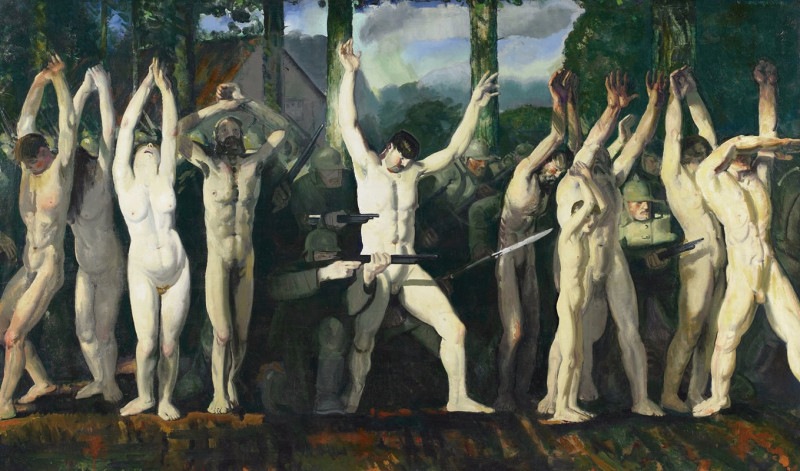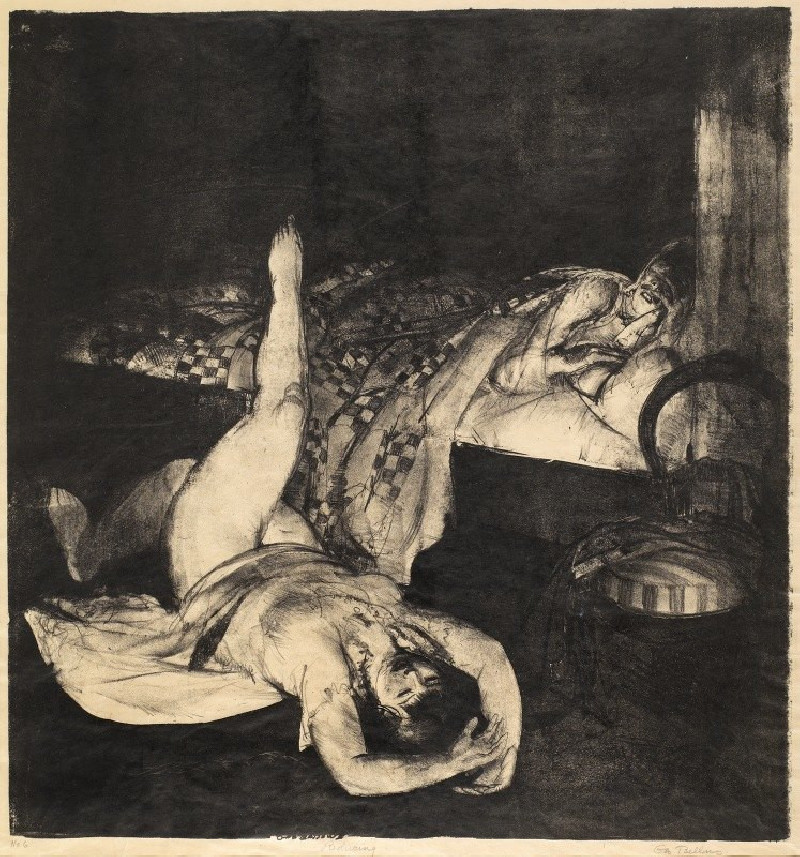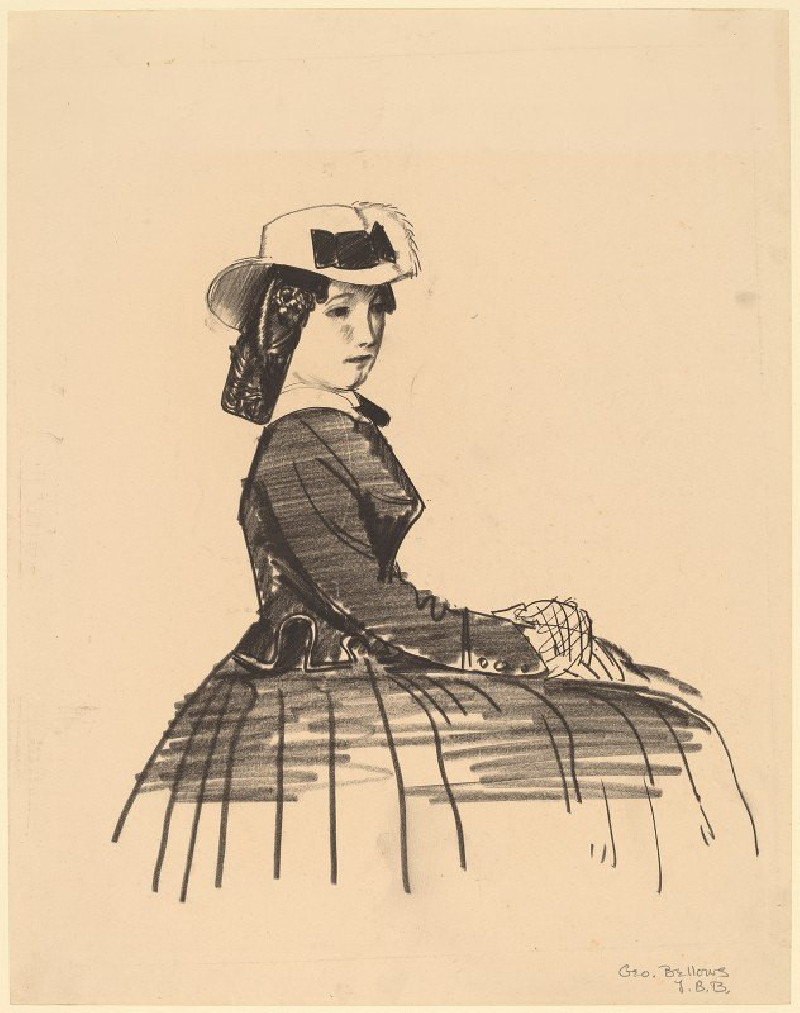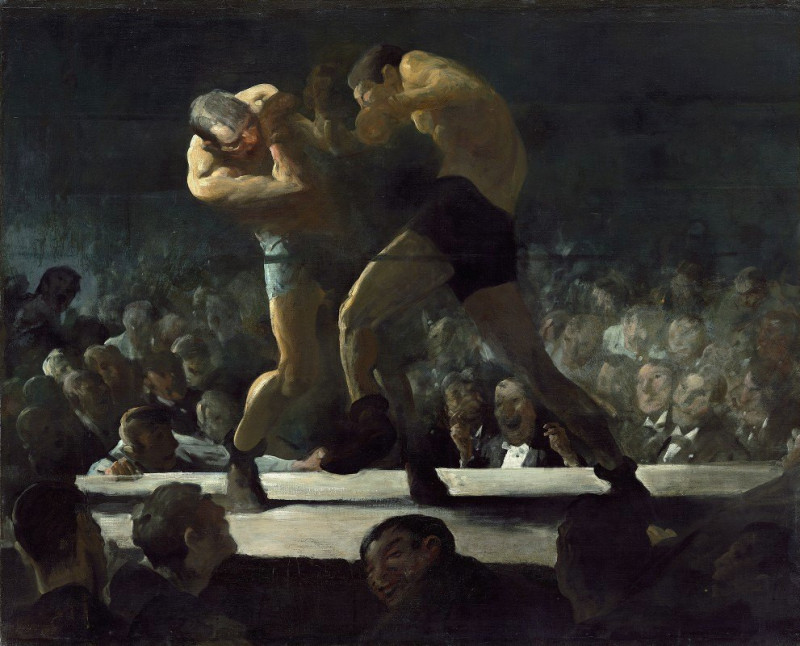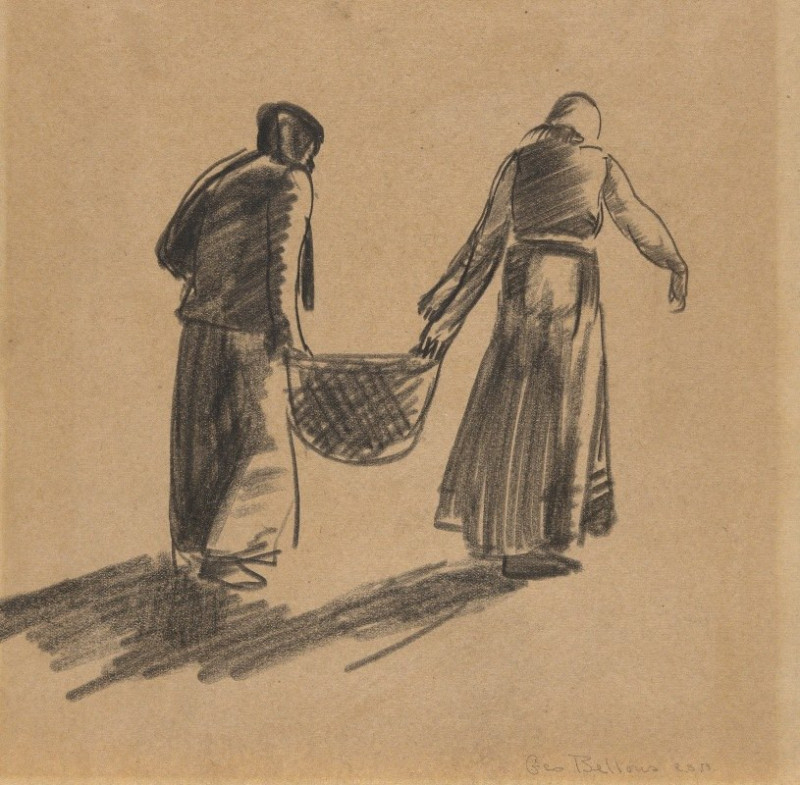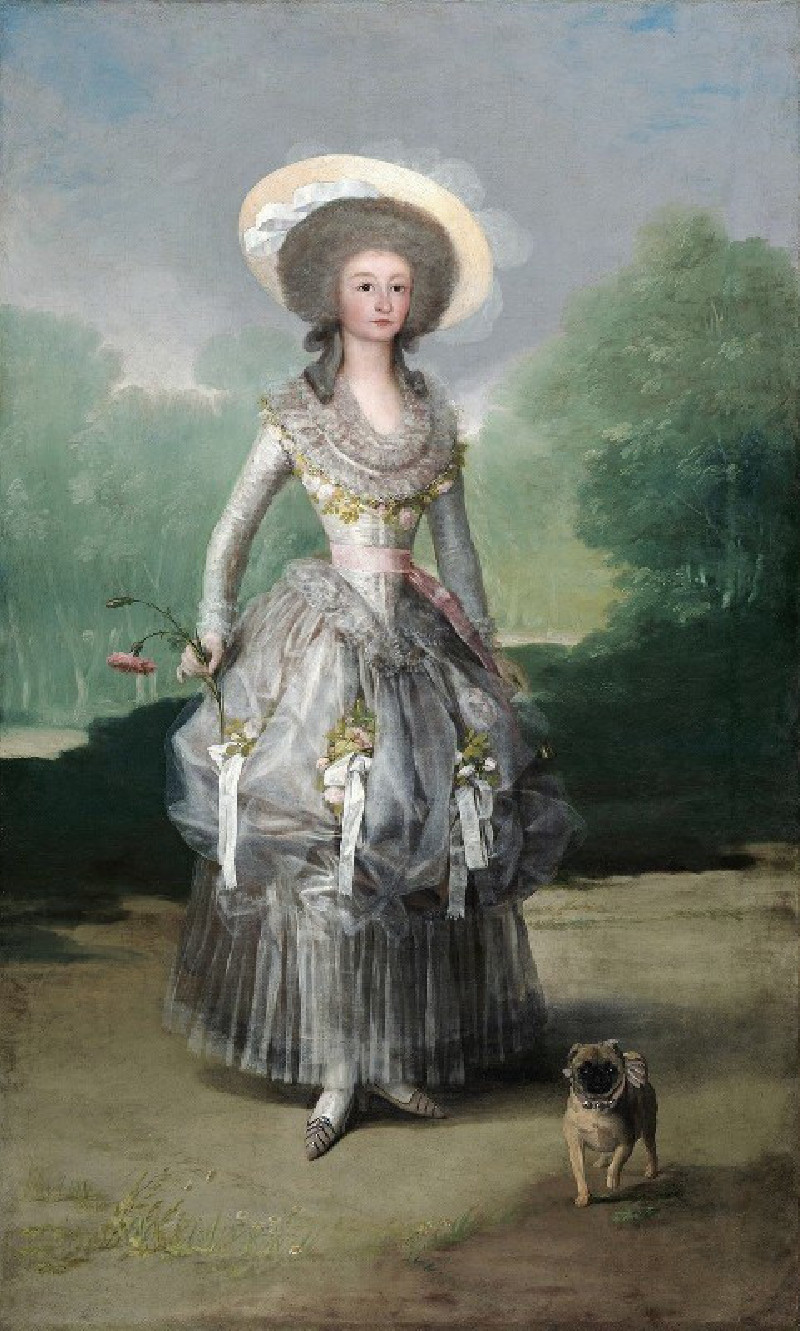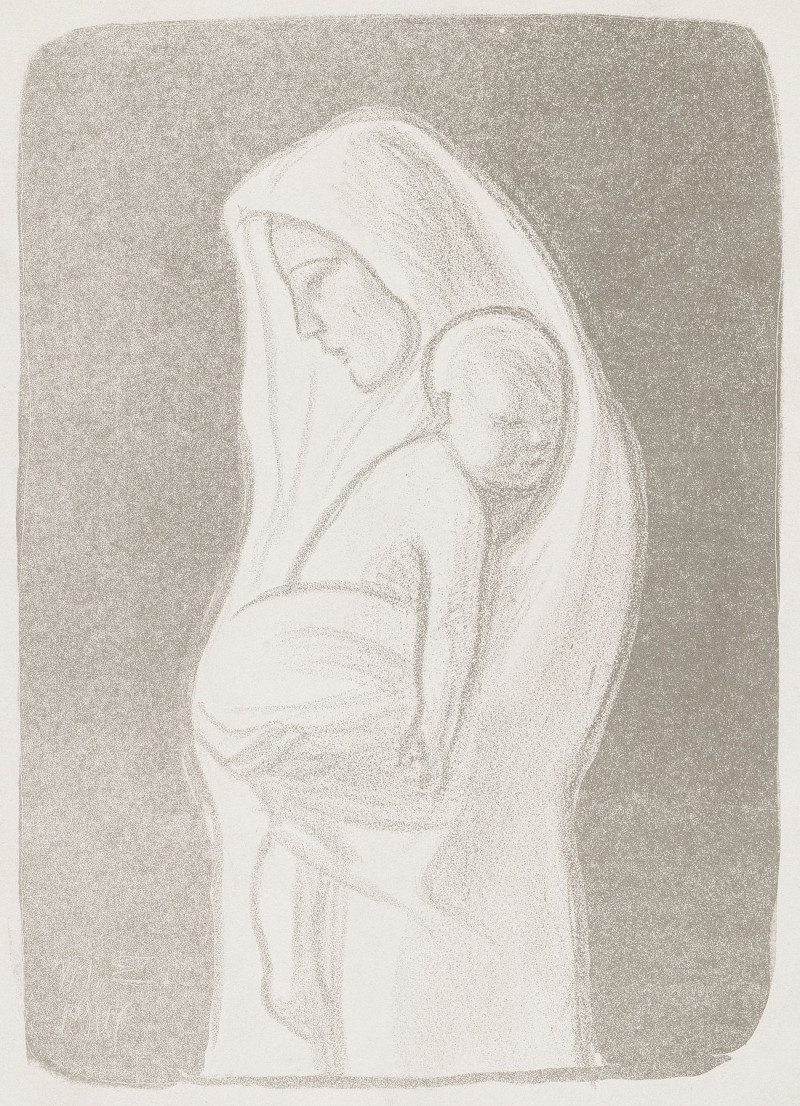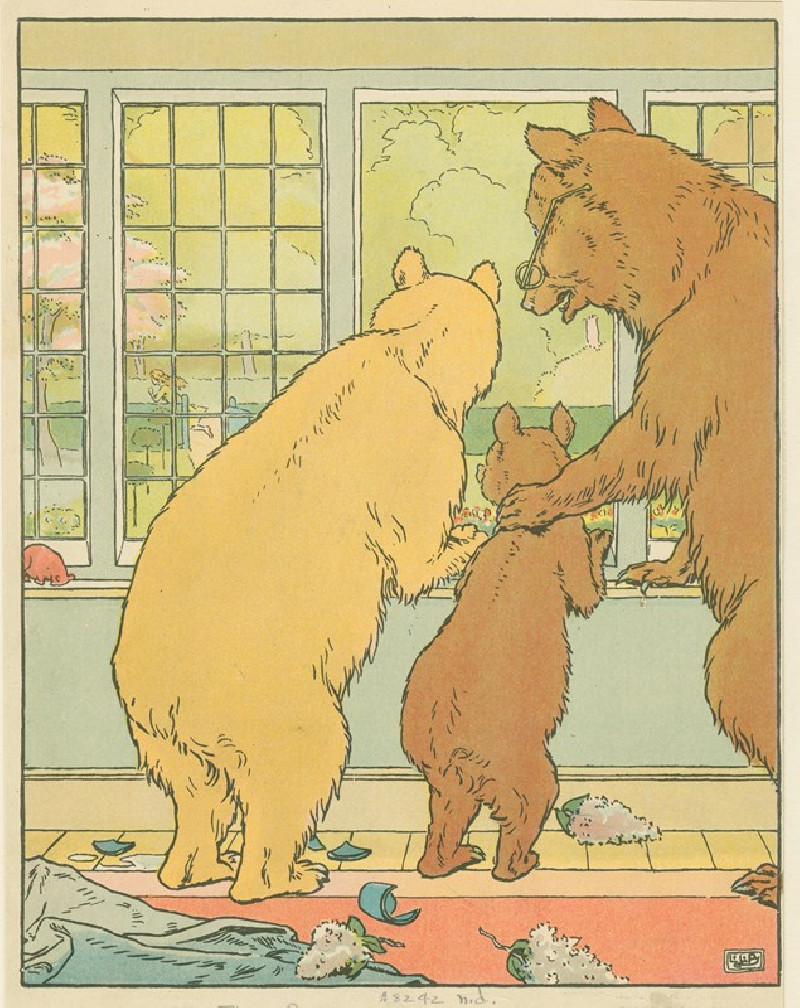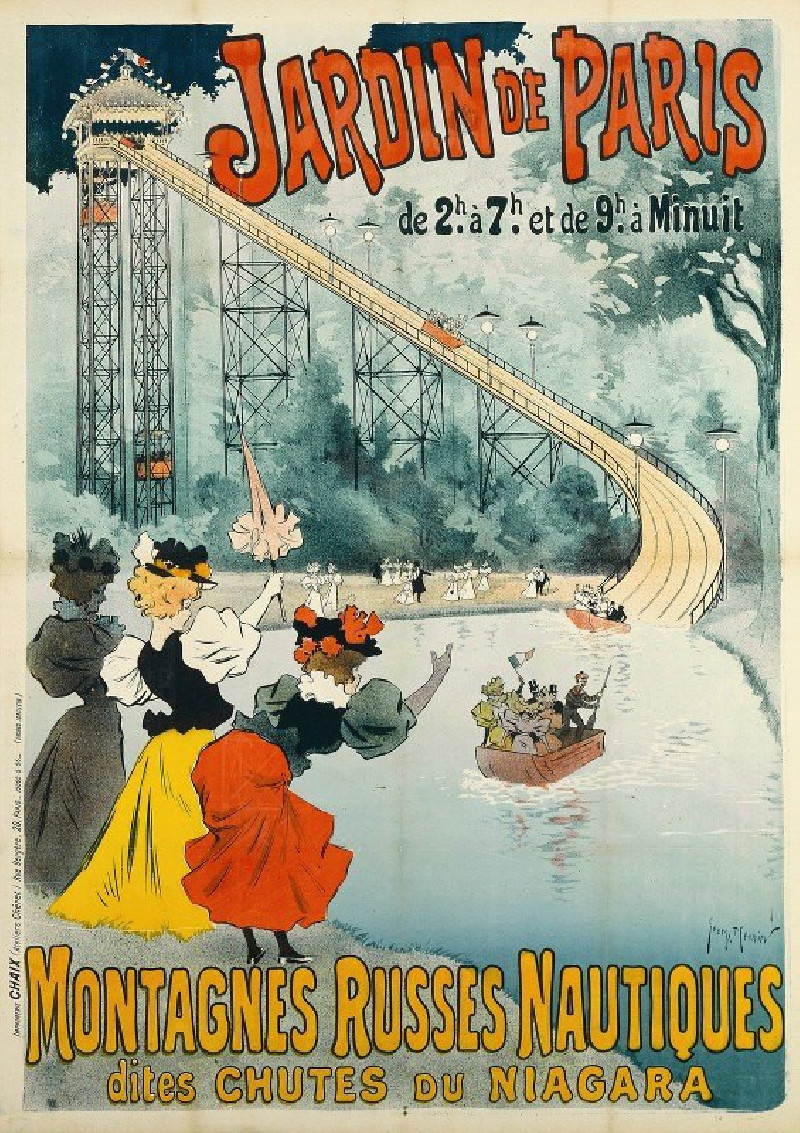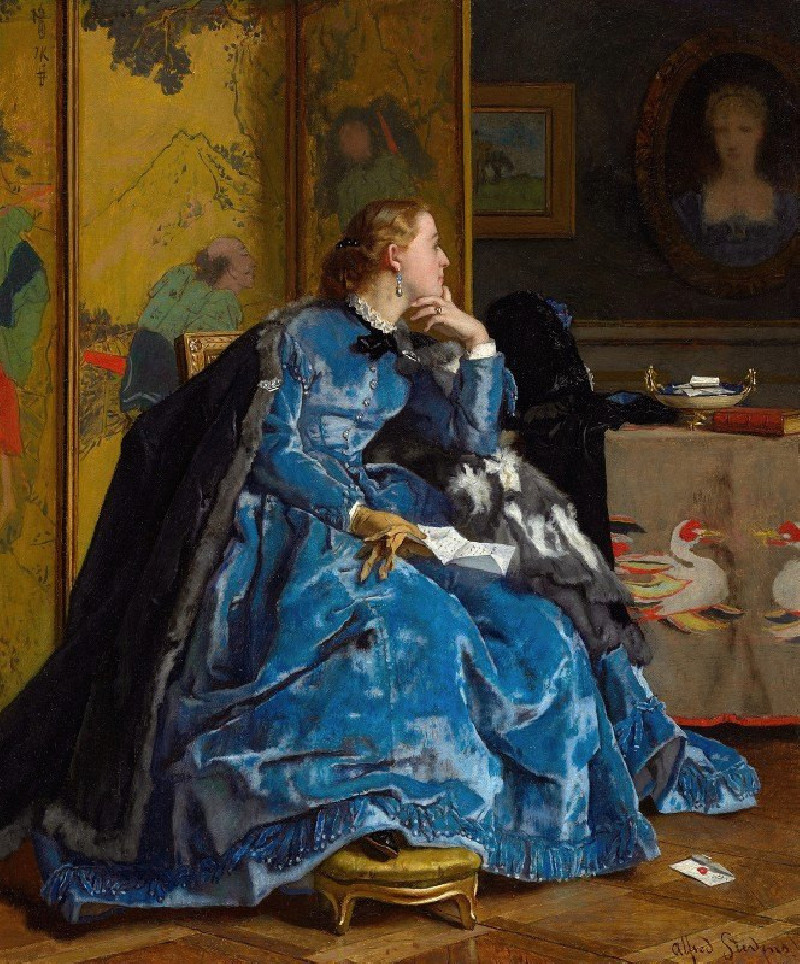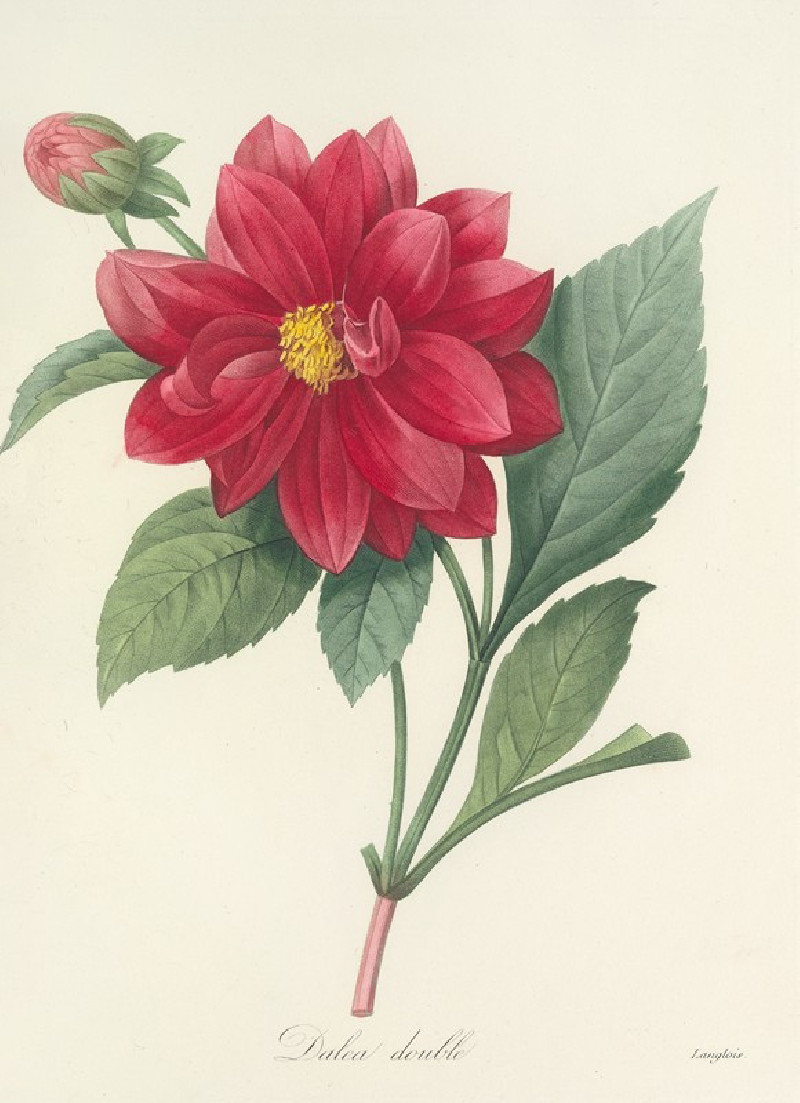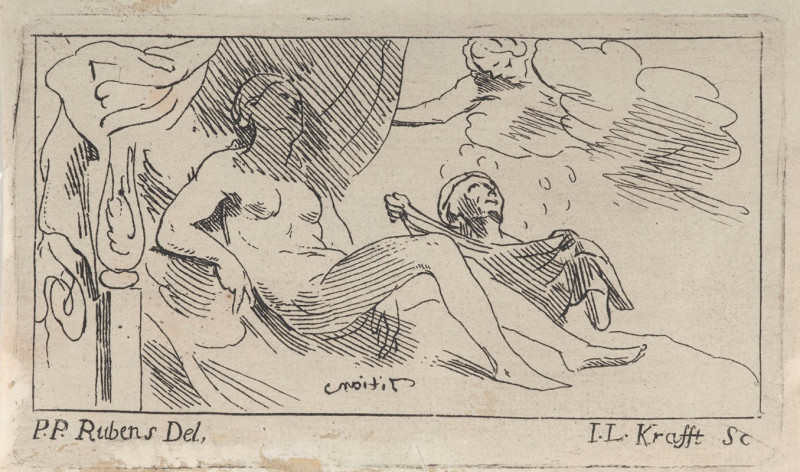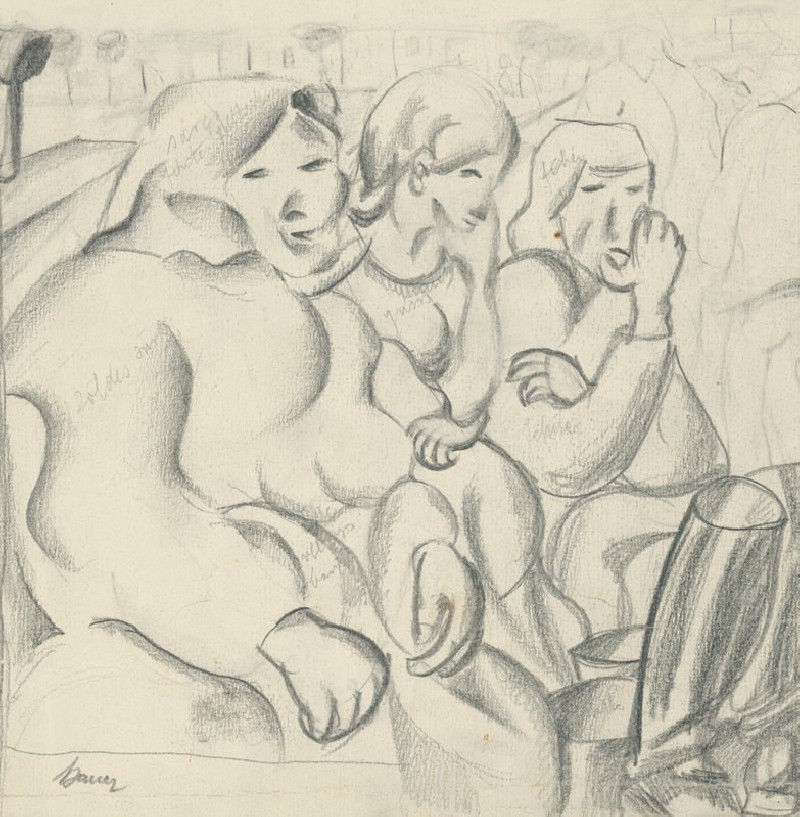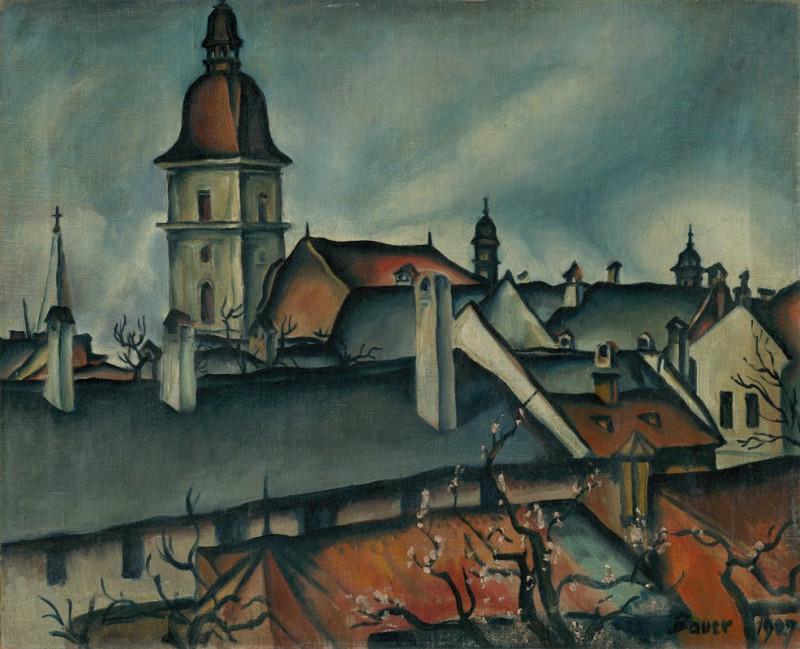The Hag and the Young Man (probably 1922)
Technique: Giclée quality print
Recommended by our customers
More about this artwork
"The Hag and the Young Man" by George Wesley Bellows, likely from 1922, presents a narrative scene rich in drama and mysterious undertones. This compelling artwork captures a moment between an old woman and a young man in a desolate, moonlit landscape. The two figures are dramatically illuminated by the light of a full moon, casting an ethereal glow that enhances the emotional intensity of the scene.In the foreground, the hag, cloaked in a dark, flowing garment, bends towards the young man with a gesture that seems to oscillate between confrontation and supplication. The young man, sitting on a rock, responds with an anguished posture, his body turned slightly away as if in reluctance or despair. The stark, rugged pathway under the moonlight leads to a distant horizon, suggesting a journey or a pilgrimage that is either beginning or ending.Bellows masterfully uses contrasting elements of light and shadow to emphasize the emotional gravity of the encounter. The detailed rendering of the expressive faces of the characters, the twisted forms of the trees, and the textured path contribute to a sense of psychological depth and narrative complexity. This painting invites viewers to ponder the story behind this tense interaction and the broader implications of fate, choice, and destiny in human lives.Displayed in a soft monochrome palette, "The Hag and the Young Man" is a fine example of American art from the early 20th century, showcasing George Wesley Bellows' skill in blending narrative art with profound thematic content.
Delivery
Returns
George Wesley Bellows (August 12 or August 19, 1882 – January 8, 1925) was an American realist painter, known for his bold depictions of urban life in New York City. He became, according to the Columbus Museum of Art, "the most acclaimed American artist of his generation".


